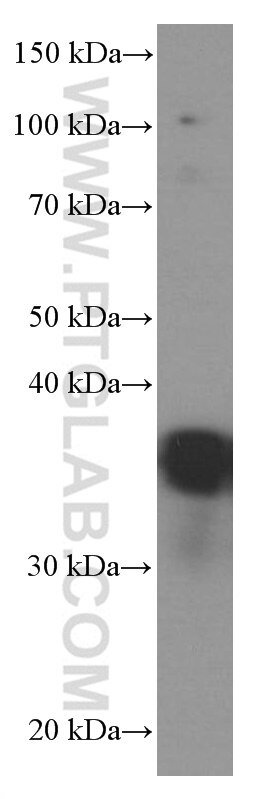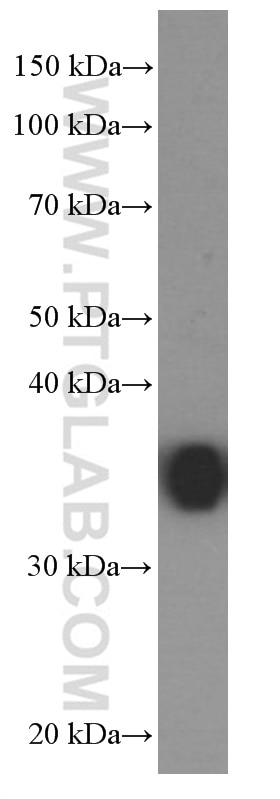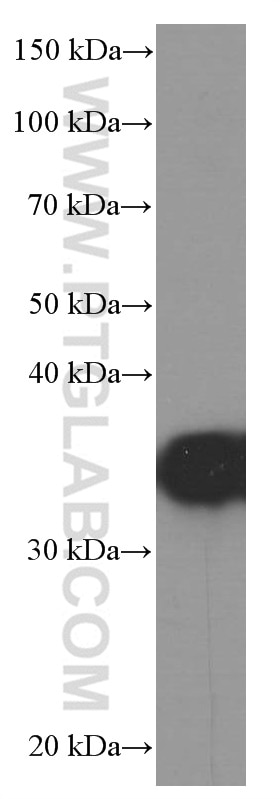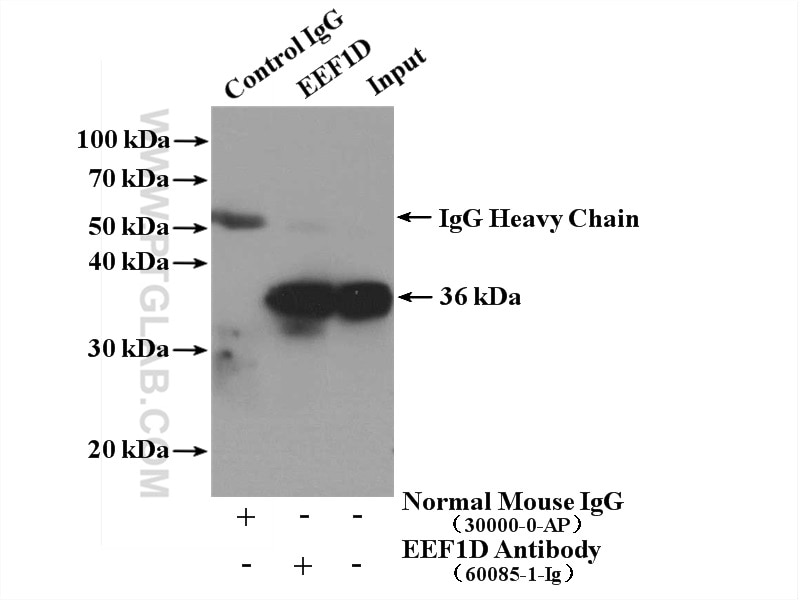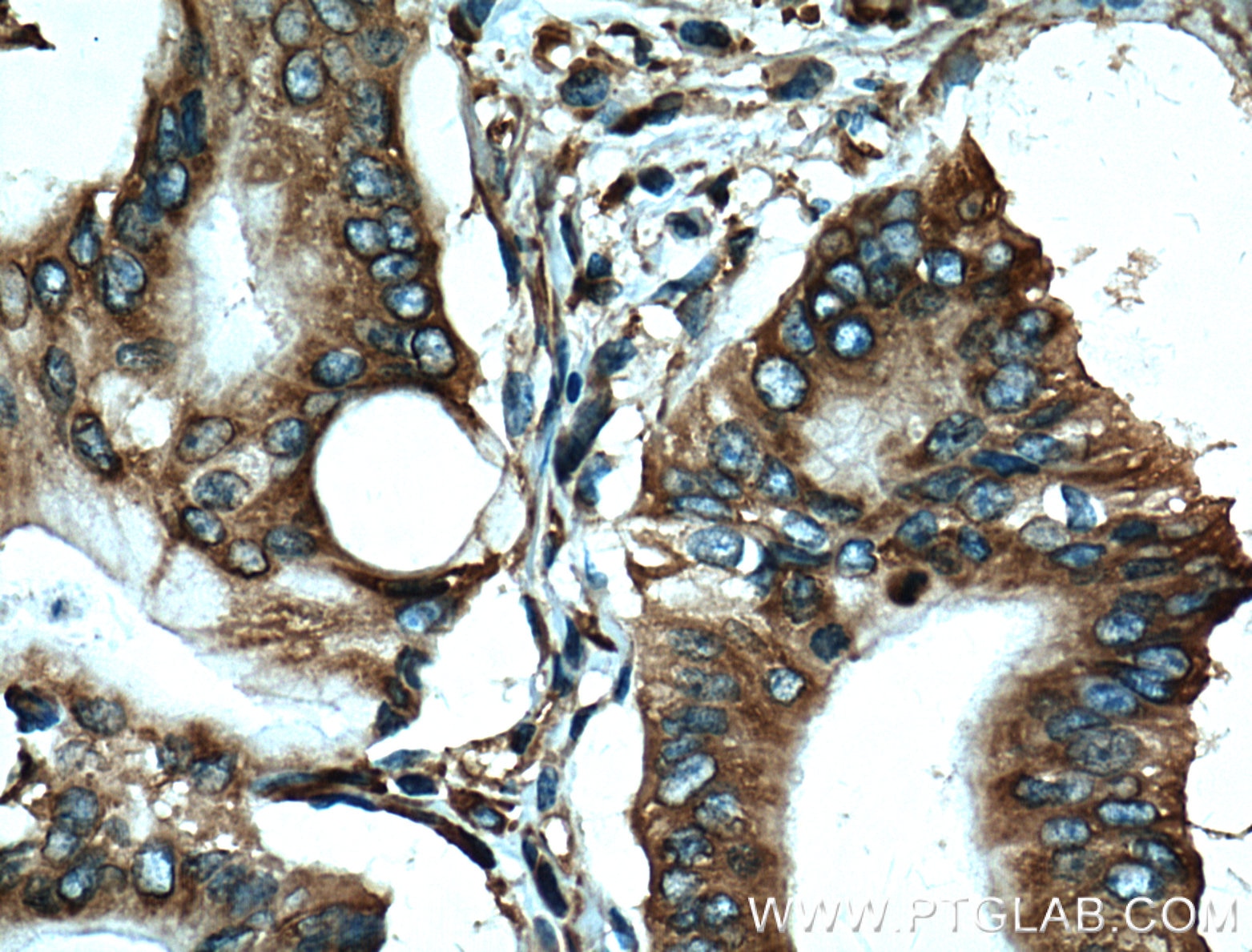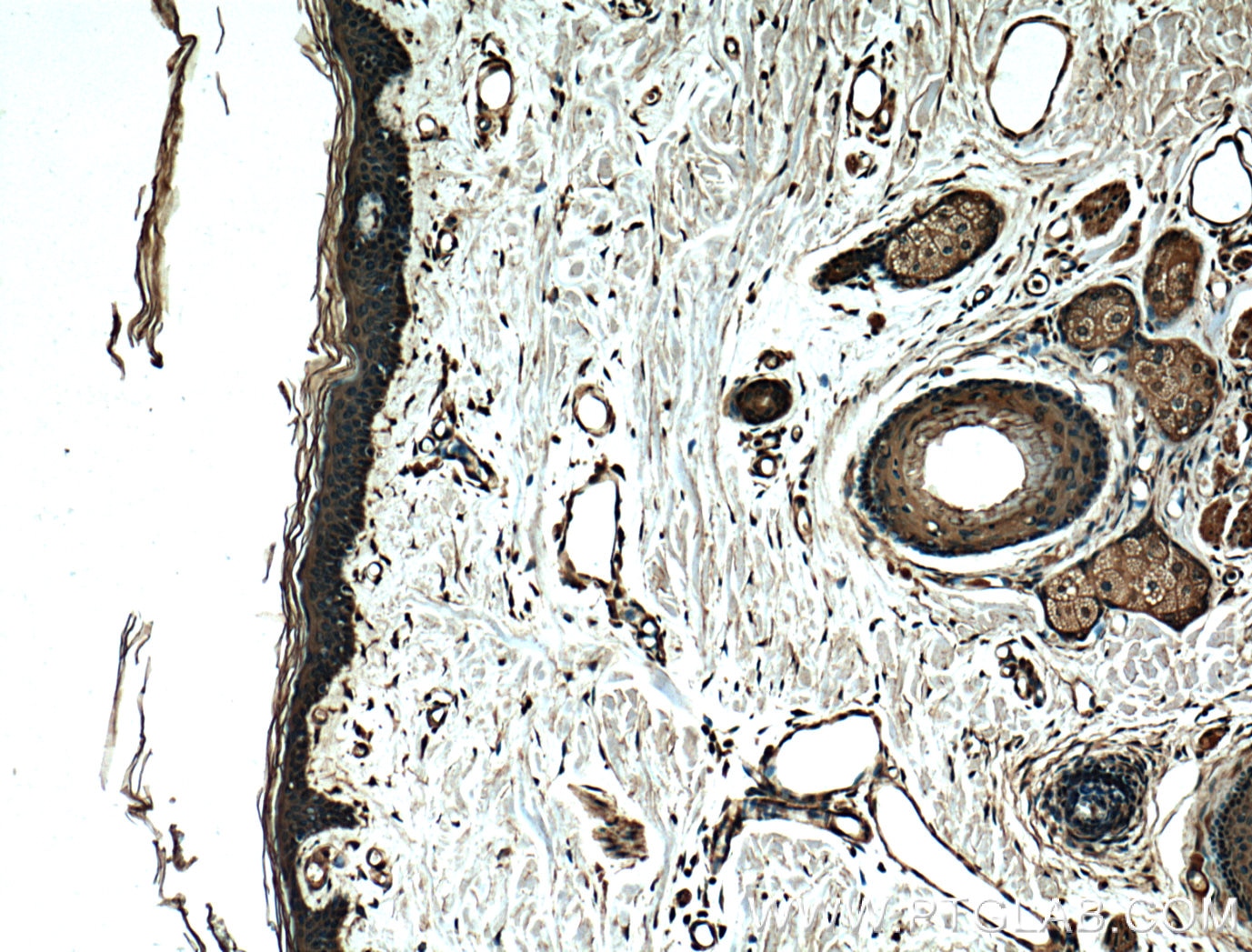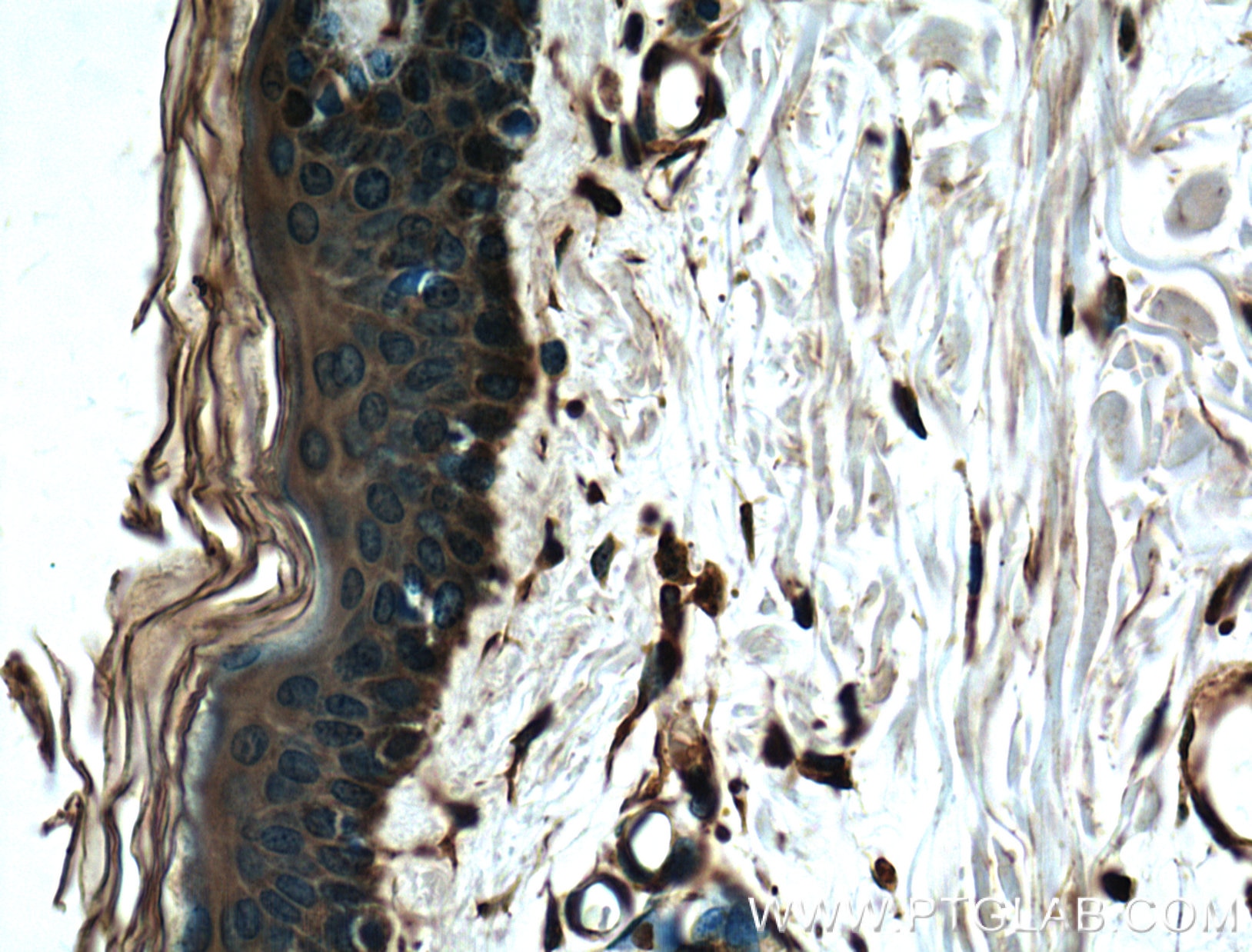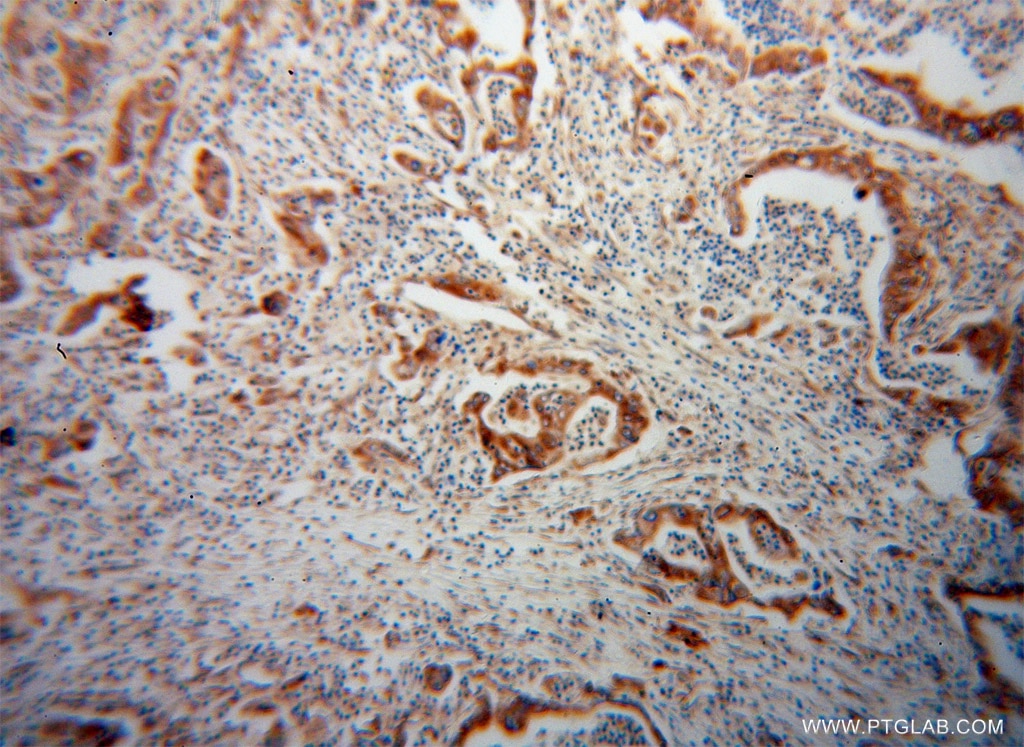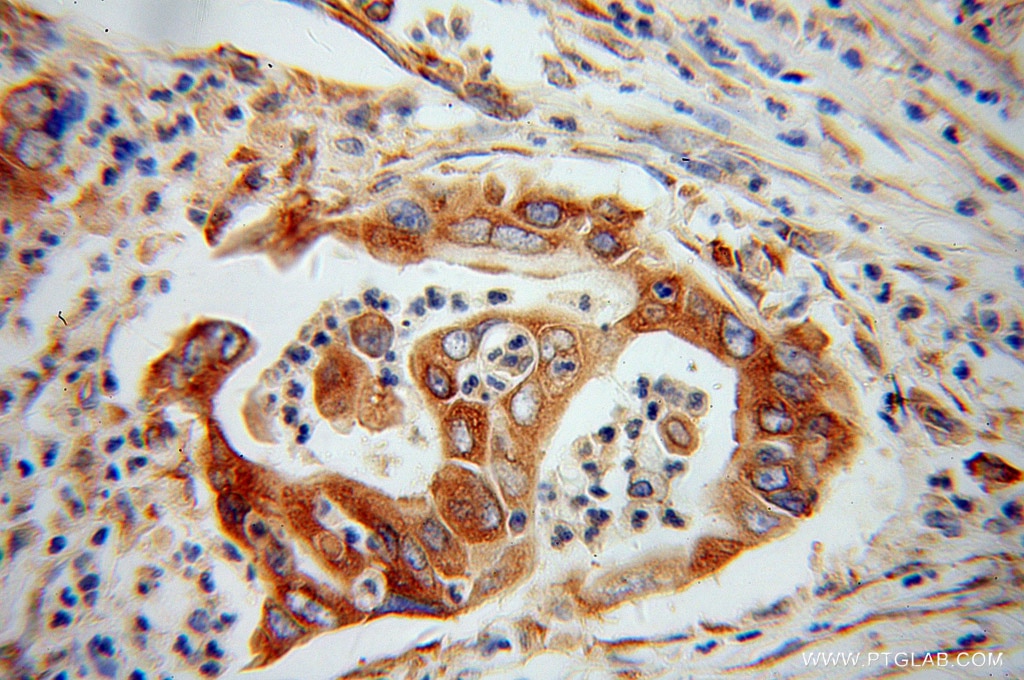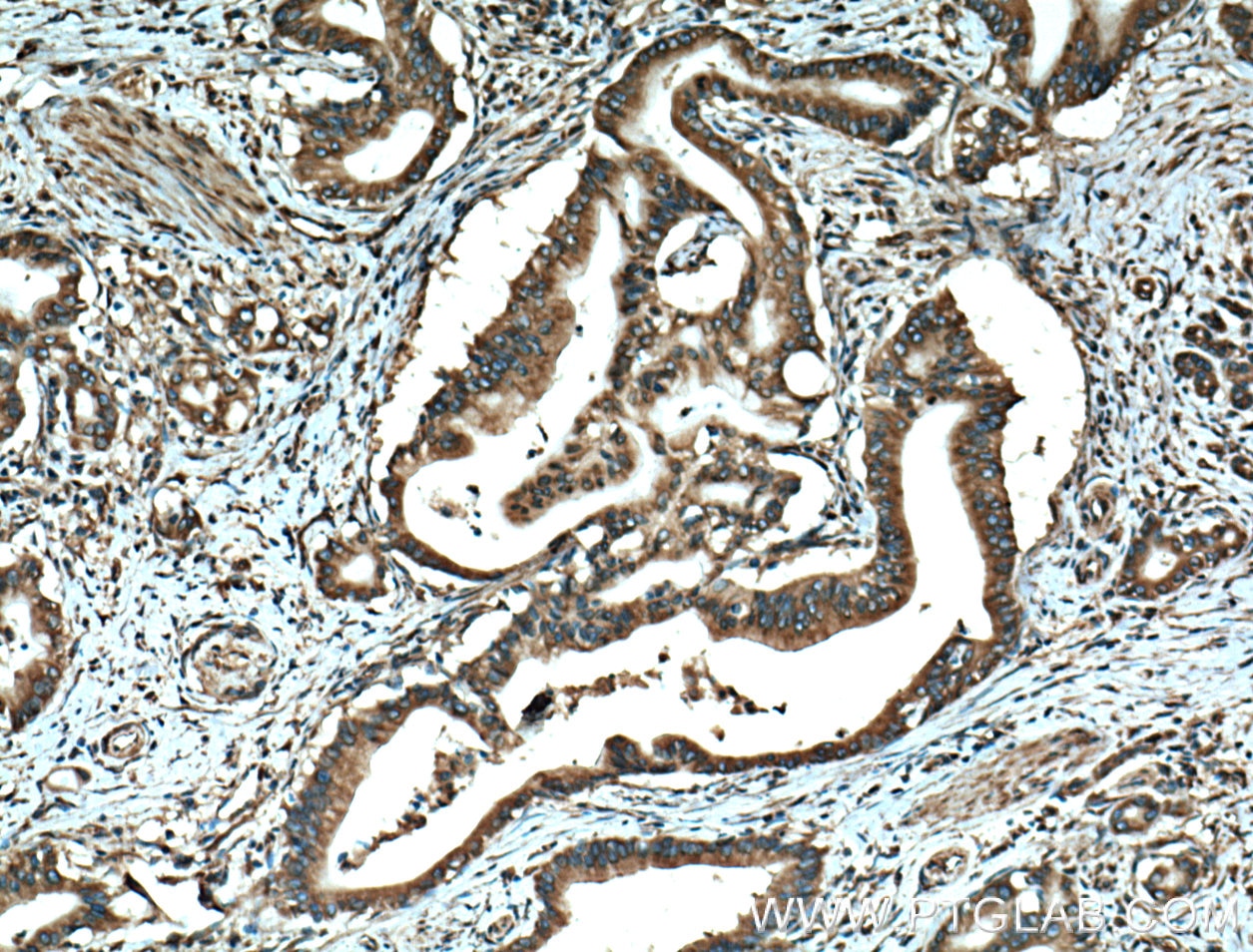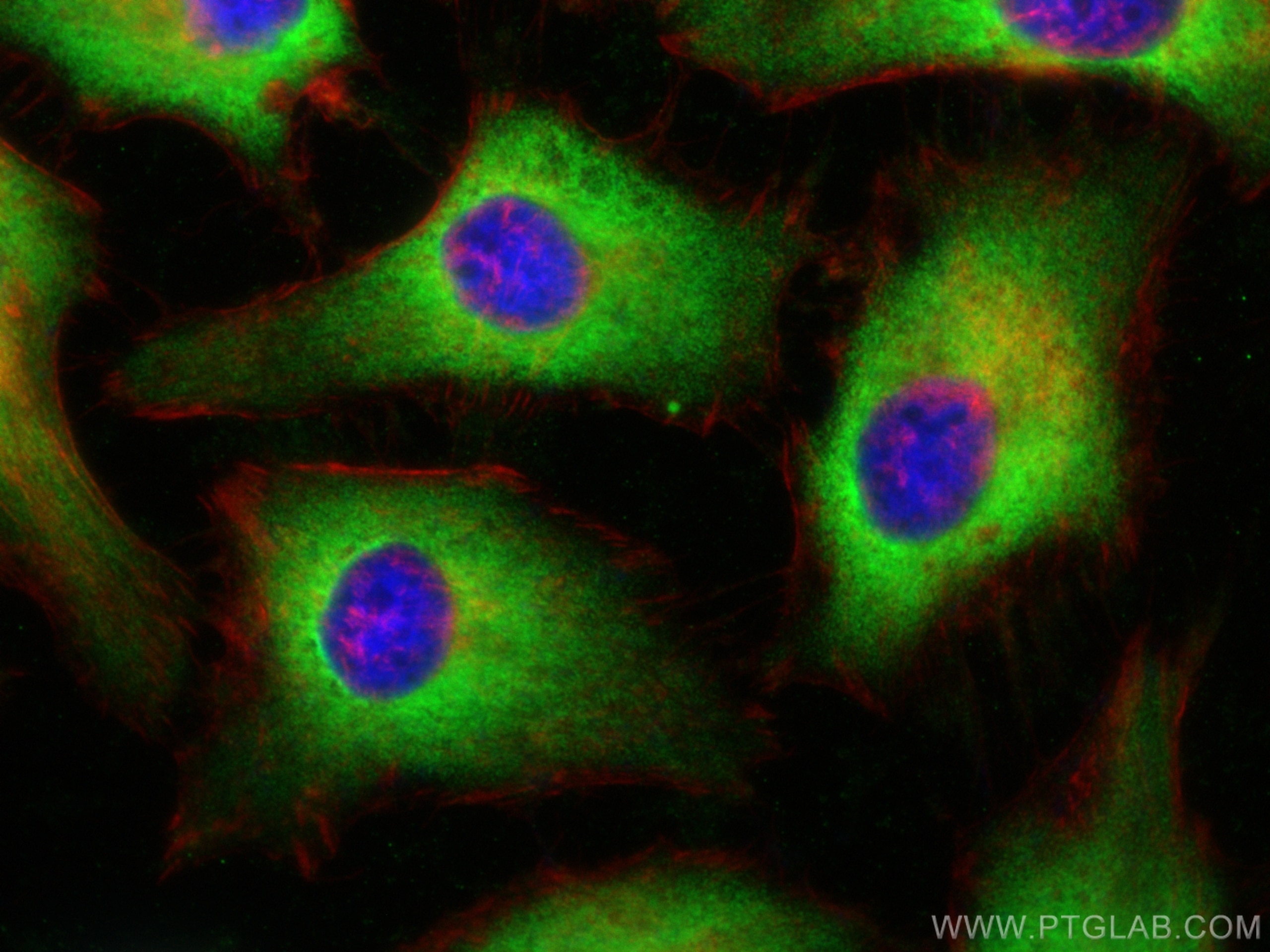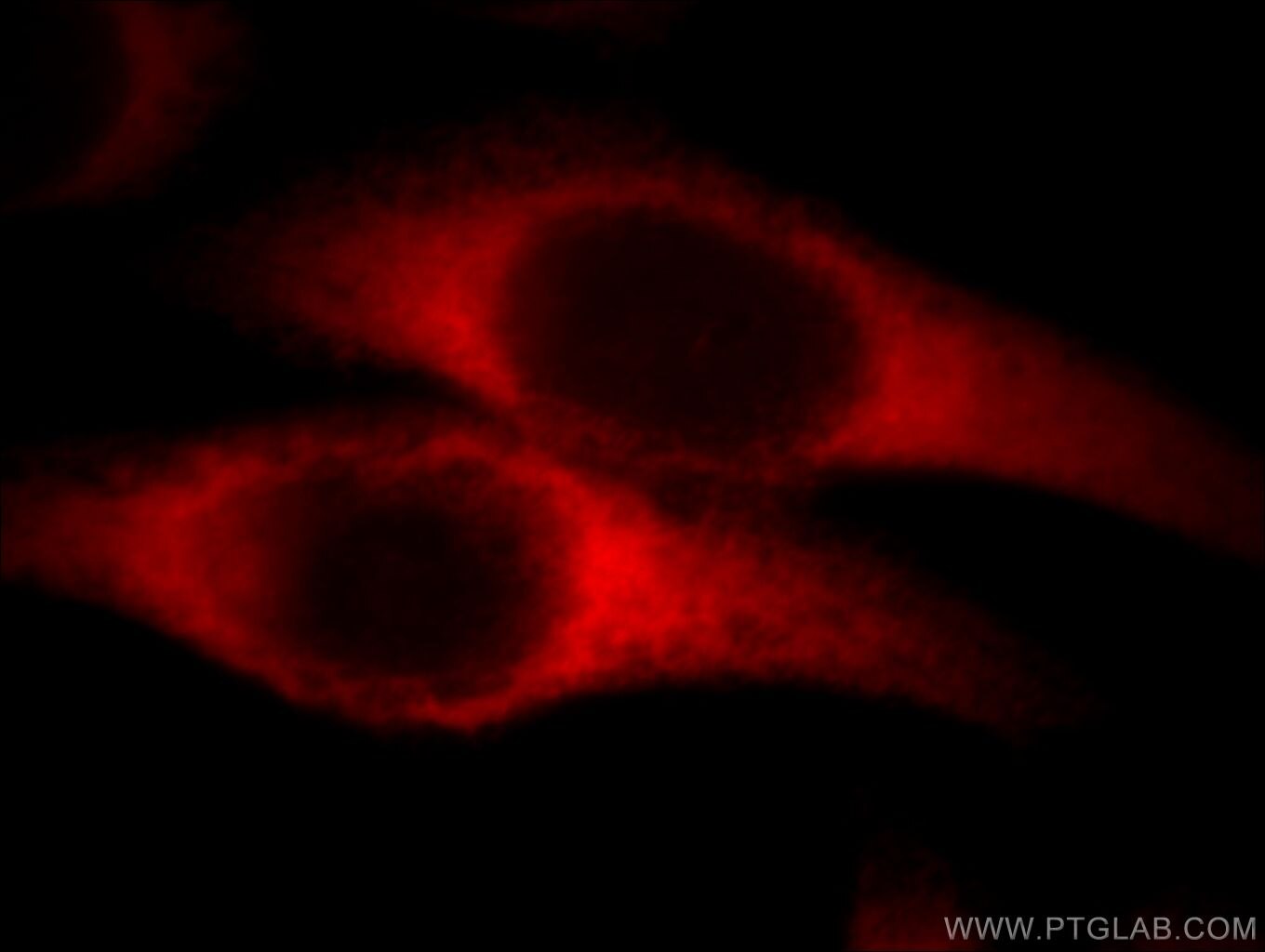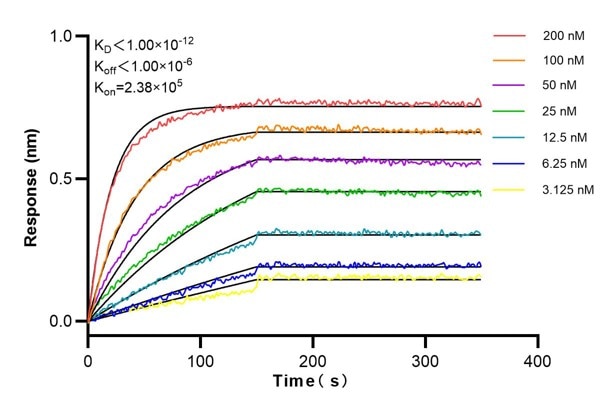- Phare
- Validé par KD/KO
Anticorps Monoclonal anti-EEF1D
EEF1D Monoclonal Antibody for WB, IHC, IF/ICC, IP, ELISA
Hôte / Isotype
Mouse / IgG1
Réactivité testée
Humain, rat, souris
Applications
WB, IHC, IF/ICC, IP, ELISA
Conjugaison
Non conjugué
CloneNo.
3B1B11
N° de cat : 60085-1-Ig
Synonymes
Galerie de données de validation
Applications testées
| Résultats positifs en WB | cellules Jurkat, cellules HeLa, cellules MCF-7, cellules NIH/3T3, cellules RAW 264.7 |
| Résultats positifs en IP | cellules MCF-7, |
| Résultats positifs en IHC | tissu de cancer du pancréas humain, tissu cutané humain il est suggéré de démasquer l'antigène avec un tampon de TE buffer pH 9.0; (*) À défaut, 'le démasquage de l'antigène peut être 'effectué avec un tampon citrate pH 6,0. |
| Résultats positifs en IF/ICC | cellules HeLa, |
Dilution recommandée
| Application | Dilution |
|---|---|
| Western Blot (WB) | WB : 1:500-1:2000 |
| Immunoprécipitation (IP) | IP : 0.5-4.0 ug for 1.0-3.0 mg of total protein lysate |
| Immunohistochimie (IHC) | IHC : 1:50-1:500 |
| Immunofluorescence (IF)/ICC | IF/ICC : 1:400-1:1600 |
| It is recommended that this reagent should be titrated in each testing system to obtain optimal results. | |
| Sample-dependent, check data in validation data gallery | |
Applications publiées
| KD/KO | See 1 publications below |
| WB | See 4 publications below |
| IF | See 1 publications below |
| IP | See 1 publications below |
Informations sur le produit
60085-1-Ig cible EEF1D dans les applications de WB, IHC, IF/ICC, IP, ELISA et montre une réactivité avec des échantillons Humain, rat, souris
| Réactivité | Humain, rat, souris |
| Réactivité citée | Humain, souris |
| Hôte / Isotype | Mouse / IgG1 |
| Clonalité | Monoclonal |
| Type | Anticorps |
| Immunogène | EEF1D Protéine recombinante Ag0983 |
| Nom complet | eukaryotic translation elongation factor 1 delta (guanine nucleotide exchange protein) |
| Masse moléculaire calculée | 31 kDa |
| Poids moléculaire observé | 35-40 kDa |
| Numéro d’acquisition GenBank | BC007847 |
| Symbole du gène | EEF1D |
| Identification du gène (NCBI) | 1936 |
| Conjugaison | Non conjugué |
| Forme | Liquide |
| Méthode de purification | Purification par protéine G |
| Tampon de stockage | PBS with 0.02% sodium azide and 50% glycerol |
| Conditions de stockage | Stocker à -20°C. Stable pendant un an après l'expédition. L'aliquotage n'est pas nécessaire pour le stockage à -20oC Les 20ul contiennent 0,1% de BSA. |
Informations générales
EEF1D, also named as EF1D and EF 1 delta, belongs to the EF-1-beta/EF-1-delta family. It is a subunit of the elongation factor-1 complex, which is responsible for the enzymatic delivery of aminoacyl tRNAs to the ribosome. EF-1-beta and EF-1-delta stimulate the exchange of GDP bound to EF-1-alpha to GTP. EEF1D is phosphorylated upon DNA damage, probably by ATM or ATR. The calculated molecular weight of EEF1D is a 31 kDa, but the modified protein is about 35-40 kDa. ( PMID: 21936567 )
Protocole
| Product Specific Protocols | |
|---|---|
| WB protocol for EEF1D antibody 60085-1-Ig | Download protocol |
| IHC protocol for EEF1D antibody 60085-1-Ig | Download protocol |
| IF protocol for EEF1D antibody 60085-1-Ig | Download protocol |
| IP protocol for EEF1D antibody 60085-1-Ig | Download protocol |
| Standard Protocols | |
|---|---|
| Click here to view our Standard Protocols |
Publications
| Species | Application | Title |
|---|---|---|
Cell Chem Biol A photoaffinity labeling strategy identified EF1A1 as a binding protein of cyclic dinucleotide 2'3'-cGAMP. | ||
Free Radic Biol Med Proteomic analysis of the glutathione-deficient LEGSKO mouse lens reveals activation of EMT signaling, loss of lens specific markers, and changes in stress response proteins. | ||
Front Microbiol Strain-Specific Contribution of Eukaryotic Elongation Factor 1 Gamma to the Translation of Influenza A Virus Proteins. | ||
J Virol Eukaryotic translation elongation factor 1 delta inhibits the nuclear import of nucleoprotein and PA-PB1 heterodimer of influenza A virus.
| ||
STAR Protoc Protocol for identification and validation of 2'3'-cGAMP-binding proteins by photoaffinity probes. | ||
BMC Biol Foxg1 regulates translation of neocortical neuronal genes, including the main NMDA receptor subunit gene, Grin1 |
